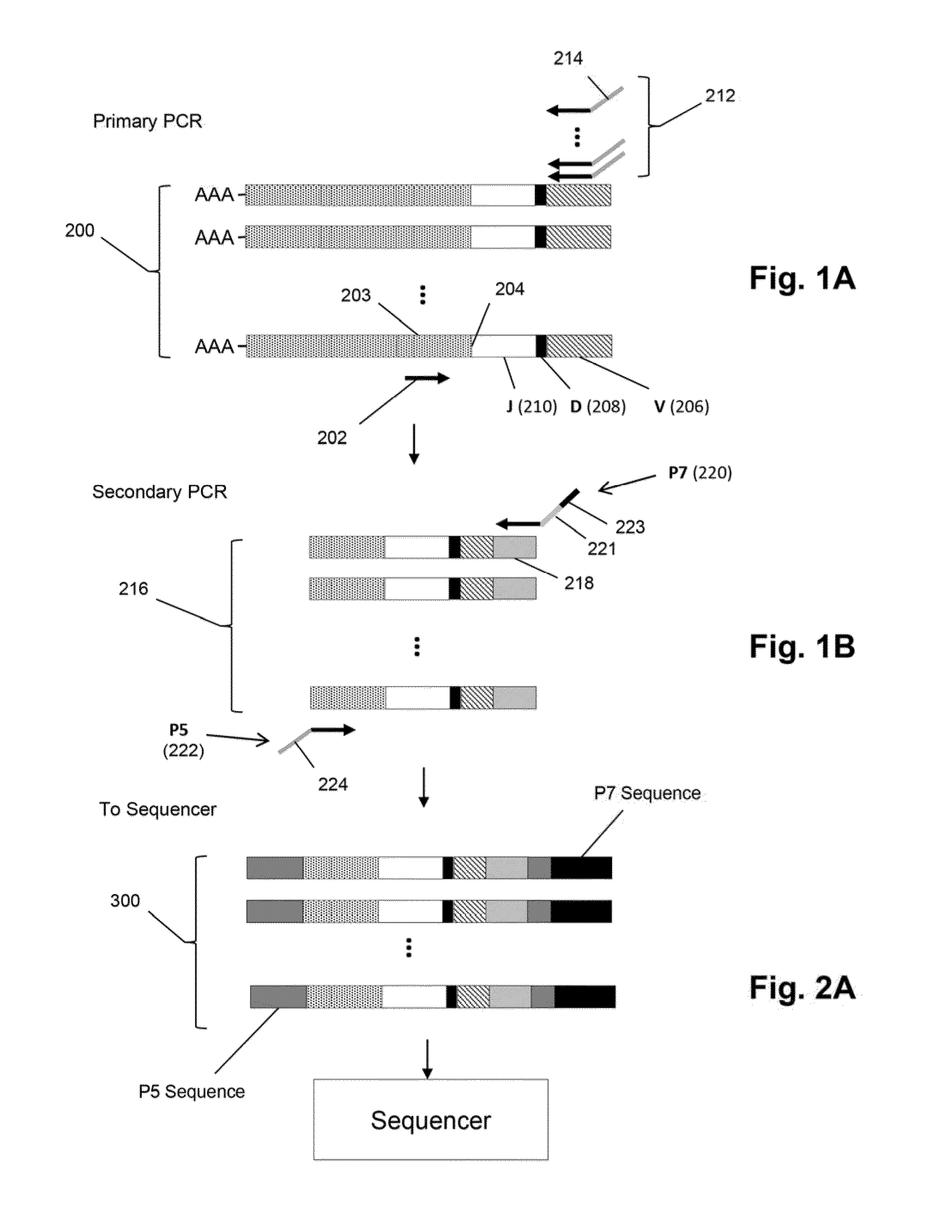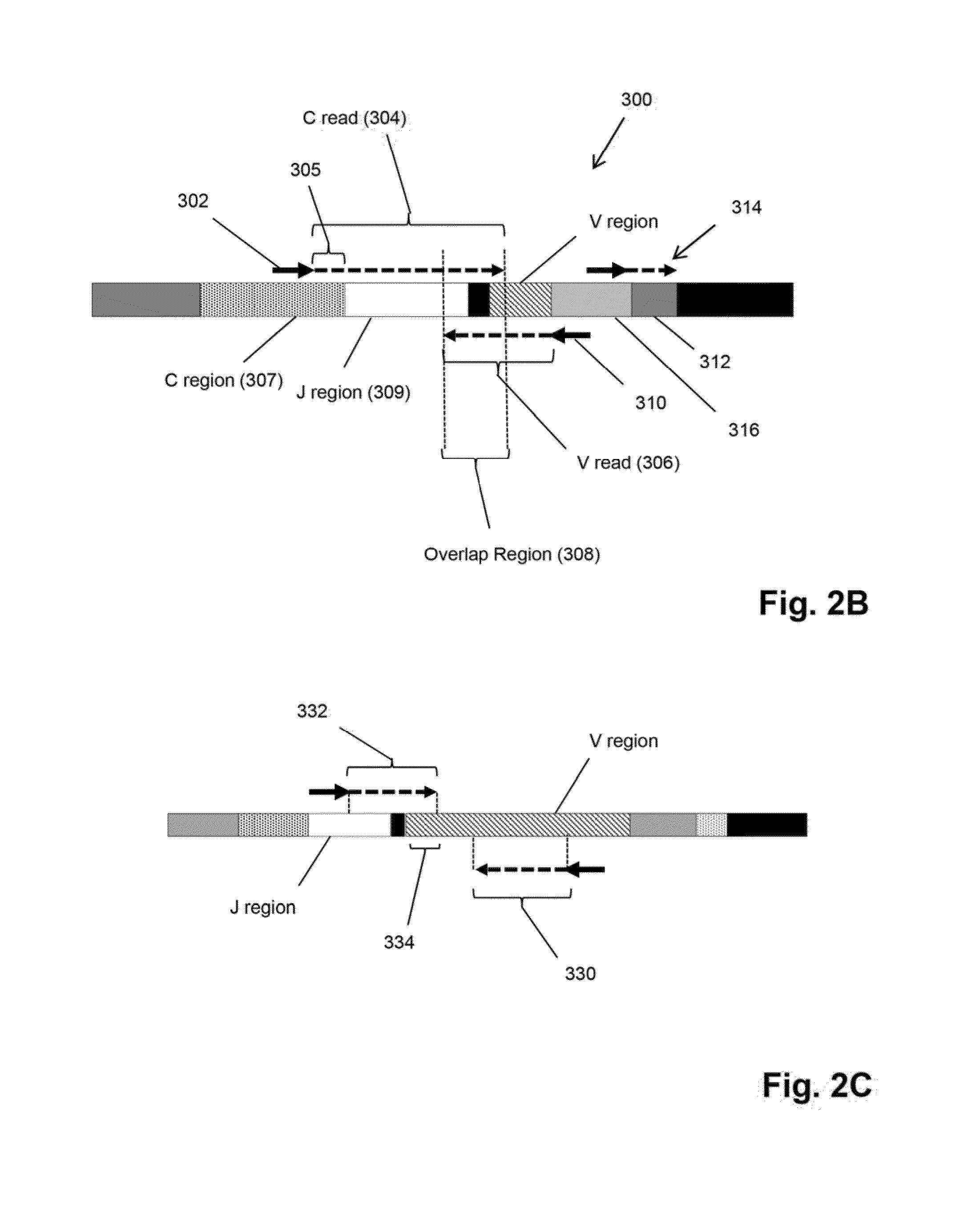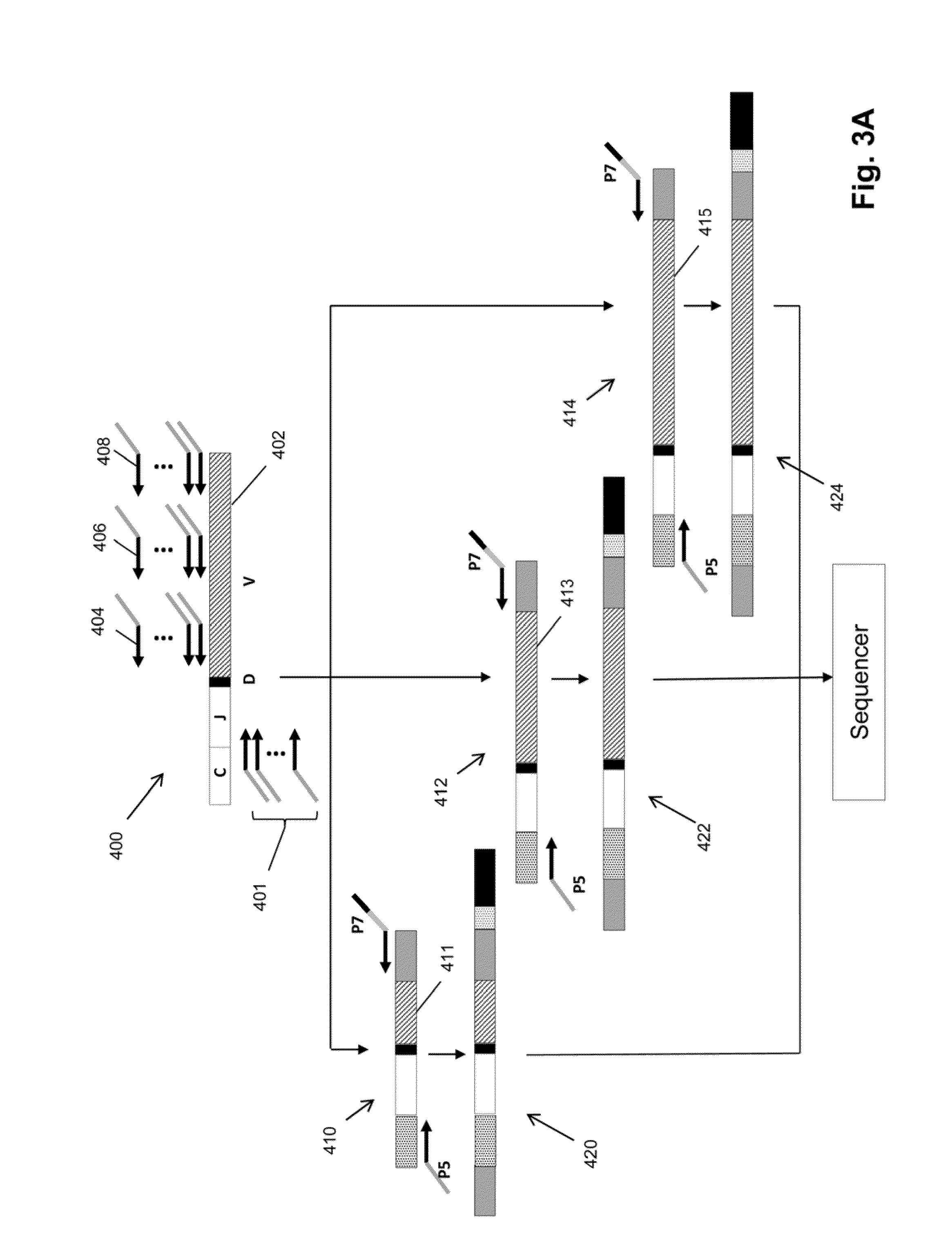Detecting disease-correlated clonotypes from fixed samples
a technology of clonotypes and fixed samples, applied in the field of monitoring health and disease conditions, can solve problems such as poor quality, and achieve the effects of convenient sampling, less invasiveness, and more accessible samples
- Summary
- Abstract
- Description
- Claims
- Application Information
AI Technical Summary
Benefits of technology
Problems solved by technology
Method used
Image
Examples
example 1
TCRβ Repertoire Analysis: Amplification and Sequencing Strategy
[0068]In this example, TCRβ chains are analyzed from a sample of RNA extracted from FFPE bone marrow tissue (Cureline, Inc., South San Francisco, Calif.) using a conventional protocol. The analysis includes amplification, sequencing, and analyzing the TCRβ sequences. Amplification is carried out using primers disclosed in Faham and Willis, Faham and Willis, U.S. patent publication 2010 / 0151471 (which is incorporated herein by reference).
[0069]The Illumina Genome Analyzer is used to sequence the amplicon produced in the above amplification. Briefly, the amplification is performed as follows. A two-stage amplification is performed on messenger RNA transcripts (200), as illustrated in FIGS. 2A-2B, the first stage employing the above primers and a second stage to add common primers for bridge amplification and sequencing. As shown in FIG. 1A, a primary PCR is performed using on one side a 20 bp primer (202) whose 3′ end is 1...
example 2
IgH repertoire Analysis: Amplification and Sequencing Strategy
[0075]In this example, three primers are used to amplify V regions of IgH molecules, as illustrated in FIGS. 3B-3C, using RNA extracted from FFPE bone marrow tissue. Preferably, the primers are in regions avoiding the CDRs, which have the highest frequency of somatic mutations. Three different amplification reactions are performed. In each reaction, each of the V segments is amplified by one of the three primers and all will use the same C segment primers. The primers in each of the separate reactions are approximately the same distance from the V-D joint and different distances with respect to the primers in different reactions, so that the primers of the three reactions are spaced apart along the V segment. Assuming the last position of the V segment as 0, then the first set of primers (frame A) have the 3′ end at approximately −255, the second set (frame B) have the 3′ end at approximately −160, and the third set (fram...
PUM
| Property | Measurement | Unit |
|---|---|---|
| thick | aaaaa | aaaaa |
| volume | aaaaa | aaaaa |
| temperature | aaaaa | aaaaa |
Abstract
Description
Claims
Application Information
 Login to View More
Login to View More - R&D
- Intellectual Property
- Life Sciences
- Materials
- Tech Scout
- Unparalleled Data Quality
- Higher Quality Content
- 60% Fewer Hallucinations
Browse by: Latest US Patents, China's latest patents, Technical Efficacy Thesaurus, Application Domain, Technology Topic, Popular Technical Reports.
© 2025 PatSnap. All rights reserved.Legal|Privacy policy|Modern Slavery Act Transparency Statement|Sitemap|About US| Contact US: help@patsnap.com



